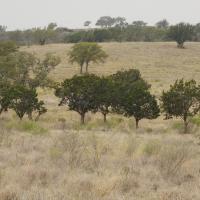Soil carbon, especially in the form of soil organic matter, is one of the major ecosystem carbon pools, and plays an important role in soil moisture retention and fertility. Enhancing soil carbon pools through Sustainable Agricultural Land Management (SALM) is an important modality for sequestration of atmospheric carbon, with the added benefit of enhancing agricultural soil productivity and resiliency. While the soil carbon impacts of SALM activities can be estimated using a number of models, these models have not be calibrated for all sites or soils, and there remain significant uncertainties in the rate and amount of soil carbon changes under specific conditions and practices.
Working for The Earth Partners, Brinkman Earth Systems, in collaboration with Applied Ecosystem Services, developed a modular methodology for estimating the impacts of SALM practices on above and below ground carbon pools, and emissions. The methodology is sampling based, to allow application in areas where models may not be adequately calibrated. The methodology provides standardized, repeat sampling methods applicable both to estimation of carbon pools, and to scientific research on soils and soil carbon. The methodology is designed to capture soil carbon change not only in surface soil horizons, but also in deeper horizons, where less research has been undertaken on management impacts.


 520 Sharpe Street, New Westminster, BC V3M 4R2
520 Sharpe Street, New Westminster, BC V3M 4R2 (604) 521-7771
(604) 521-7771

